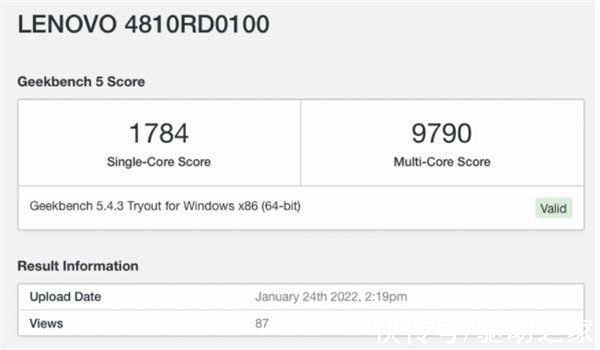vue3е’Ңreact17(дёү)|vue3е’Ңreact17(дёү) - з”ҹе‘Ҫе‘Ёжңҹ(ts)
еӯҰд№ reactзҡ„з”ҹе‘Ҫе‘Ёжңҹзҡ„ж—¶еҖҷд»Ҙдёәдјҡvueе·®дёҚеӨҡ, з»“жһңеҸ‘зҺ°иҝҳжҳҜжңүе·®еҲ«зҡ„, vue3зҡ„з”ҹе‘Ҫе‘ЁжңҹеҲҷе’Ңvue2жІЎд»Җд№ҲеҸҳеҢ–,
гҖҗvue3е’Ңreact17(дёү)|vue3е’Ңreact17(дёү) - з”ҹе‘Ҫе‘Ёжңҹ(ts)гҖ‘иҝҷж¬Ўж–Үз« жҜ”иҫғй•ҝ, жҜ”иҫғдҫ§йҮҚзҲ¶еӯҗз”ҹе‘Ҫе‘ЁжңҹйЎәеәҸе’Ңreactж–№йқў, е…¶дёӯдёҖдәӣеӣҫзүҮжҳҜеј•з”ЁйғЁеҲҶж–Үз« зҡ„
е–ңж¬ўе°ұз»ҷдёӘиөһеҗ§, иҜҘзі»еҲ—иҝҳеңЁжӣҙж–°
react
组件з”ҹе‘Ҫе‘Ёжңҹеӣҫ

ж–Үз« еӣҫзүҮ
з”ҹе‘Ҫе‘ЁжңҹAPI
| Col1 | Col2 |
|---|---|
| жҢӮиҪҪ | |
| constructor | 组件жҢӮиҪҪд№ӢеүҚиў«и°ғз”Ё |
| shouldComponentUpdate(nextProps, nextState) | еңЁи°ғз”Ё renderж–№жі•д№ӢеүҚи°ғз”ЁпјҢеңЁеҲқе§ӢеҢ–е’ҢеҗҺз»ӯжӣҙж–°йғҪдјҡиў«и°ғз”Ё |
| render | ж–№жі•жҳҜclass组件дёӯе”ҜдёҖеҝ…йЎ»е®һзҺ°зҡ„ж–№жі•пјҢз”ЁдәҺжёІжҹ“dom, render()ж–№жі•еҝ…йЎ»иҝ”еӣһreactDOM |
| componentDidMount | 组件жҢӮиҪҪеҗҺ (жҸ’е…ҘDOMж ‘еҗҺ) з«ӢеҚіи°ғз”Ё |
| жӣҙж–° | |
| shouldComponentUpdate(nextProps, nextState) | 组件жӣҙж–°д№ӢеүҚи°ғз”ЁпјҢеҸҜд»ҘжҺ§еҲ¶з»„件жҳҜеҗҰиҝӣиЎҢжӣҙж–°пјҢ иҝ”еӣһtrue时组件жӣҙж–°пјҢ иҝ”еӣһfalseеҲҷдёҚжӣҙж–° |
| getSnapshotBeforeUpdate(prevProps, prevState) | жңҖиҝ‘дёҖж¬Ўзҡ„жёІжҹ“иҫ“еҮәиў«жҸҗдәӨд№ӢеүҚи°ғз”ЁгҖӮд№ҹе°ұжҳҜиҜҙпјҢеңЁ render д№ӢеҗҺпјҢеҚіе°ҶеҜ№з»„件иҝӣиЎҢжҢӮиҪҪж—¶и°ғз”ЁгҖӮ |
| componentDidUpdate(prevProps, prevState, snapshot) | жӣҙж–°еҗҺдјҡиў«з«ӢеҚіи°ғз”ЁгҖӮйҰ–ж¬ЎжёІжҹ“дёҚдјҡжү§иЎҢ, 第дёүдёӘжҳҜвҖңsnapshotвҖқ еҸӮж•°дј йҖ’ |
| еҚёиҪҪ | |
| componentWillUnmount | 组件еҚіе°Ҷиў«еҚёиҪҪжҲ–й”ҖжҜҒж—¶иҝӣиЎҢи°ғз”ЁгҖӮ |

ж–Үз« еӣҫзүҮ
жЁЎжӢҹ componentDidMount
useEffect(() => console.log('componentDidMount'), []);
жЁЎжӢҹshouldComponentUpdate
const MemoChild = React.memo(
() => {...},
(prevProps, nextProps) => nextProps.count !== prevProps.count
)жЁЎжӢҹcomponentDidUpdate
useEffect(() => console.log('mounted or updated'));
дёҚд»…еҸҜд»Ҙи®ҝй—® componentDidUpdateпјҢиҝҳеҸҜд»Ҙи®ҝй—®componentDidMountпјҢеҰӮжһңеҸӘжғіжЁЎжӢҹ componentDidUpdateпјҢ
const ref = useRef(true);
useEffect(() => {
if (ref.current) {
ref.current = false;
}
console.log('componentDidUpdate')
});
жЁЎжӢҹcomponentWillUnmount
useEffect(() => {
return () => {
console.log('жЁЎжӢҹcomponentWillUnmount');
}
}, []);
зҲ¶еӯҗ组件з”ҹе‘Ҫе‘ЁжңҹйЎәеәҸ Parent.tsx
дёәдәҶжӣҙеҘҪзҡ„иҜҙжҳҺ, Parent.tsx дҪҝз”Ёзҡ„жҳҜhooksеҶҷжі•
const MemoChild = React.memo(
() => {
useEffect(() => console.log("MemoChild. componentDidMount"), []);
console.log("MemoChild, function render");
return memo;
},
() => false
);
function Parent() {
let [show, setShow] = useState(true);
console.log("Parent, function render");
useEffect(() => console.log("Parent. componentDidMount"), []);
useEffect(() => () => console.log("Parent. componentWillUnmount"), []);
useEffect(() => console.log("Parent. show updated"), [show]);
return (
{show ? (
) : (
);
}Child.tsx
Child.tsxдҪҝз”Ёзҡ„жҳҜReactComponentеҶҷжі•
import React from "react";
interface countProp { count2: number;
}
interface testState { count: number;
}
class Child extends React.Component {
static getDerivedStateFromProps(props: countProp, _state: testState) {
console.log("Child. getDerivedStateFromProps");
return {
count: props.count2,
};
}
constructor(props: countProp) {
super(props);
this.state = {
count: 0,
};
console.log("Child. constructor");
}componentDidMount() {
this.setState({
count: this.state.count + 123,
});
console.log("Child. componentDidMount");
}
shouldComponentUpdate() {
console.log("Child. shouldComponentUpdate");
return true;
}
getSnapshotBeforeUpdate() {
console.log("Child. getSnapshotBeforeUpdate");
return null;
}
componentDidUpdate(props: any, state: any, snapshot: any) {
console.log("Child. componentDidUpdate");
console.log("snapshot:", snapshot);
}
componentWillUnmount() {
clearInterval(this.timerID);
console.log("Child. componentWillUnmount");
}render() {
const { children } = this.props;
const { count } = this.state;
console.log("Child. render");
return (
<>
- state: {count}
{children}
);
}
} йЎәеәҸ дёҠйқўжёІжҹ“еҲ°жҢӮиҪҪд»Јз Ғжү“еҚ°зҡ„йЎәеәҸ
Parent, function render
Child. constructor
Child. getDerivedStateFromProps
Child. render
MemoChild, function render
Child. componentDidMount
MemoChild. componentDidMount
Parent. componentDidMount
Parent. show updatedеңЁChild.tsxдёӯcomponentDidMountе‘ЁжңҹдёӯдҪҝз”ЁеҲ°setData, жү“еҚ°
Child. getDerivedStateFromProps
Child. shouldComponentUpdate
Child. render
Child. getSnapshotBeforeUpdate
Child. componentDidUpdate
snapshot: nullеҪ“жҲ‘们зӮ№еҮ»parentзҡ„жҢүй’®, йҡҗи—ҸChild.tsx, жү“еҚ°
Parent, function render
MemoChild, function render
Child. componentWillUnmount
Parent. show updatedReactжҖ»з»“ 组件еҲ°жҢӮиҪҪжңҹй—ҙ, е…Ҳе®ҢжҲҗ
Parent function > Child(constructor->getDerivedStateFromProps->render) > MemoChild function > componentDidMount (Child->MemoChild->Parent)
йҖҡиҝҮдёҠйқўзҡ„йЎәеәҸеҸҜд»ҘеҸ‘зҺ°, Reactзҡ„е‘ЁжңҹжҳҜжҢүз…§еӯҗ组件йЎәеәҸжҢӮиҪҪеҗҺ, жүҚжҢӮиҪҪParent
- ==render== д»ҘеҸҠ ==render== д№ӢеүҚзҡ„з”ҹе‘Ҫе‘ЁжңҹпјҢеҲҷ зҲ¶з»„件е…Ҳжү§иЎҢ
- ==render== д»ҘеҸҠ ==render==д№ӢеҗҺзҡ„еЈ°жҳҺе‘ЁжңҹпјҢеҲҷеӯҗ组件е…Ҳжү§иЎҢпјҢ并且жҳҜдёҺзҲ¶з»„件дәӨжӣҝжү§иЎҢ
з”ҹе‘Ҫе‘Ёжңҹеӣҫ
з”ҹе‘Ҫе‘ЁжңҹAPI beforeCreate -> дҪҝз”Ё setup()
created -> дҪҝз”Ё setup()
beforeMount -> onBeforeMount
mounted -> onMounted
beforeUpdate -> onBeforeUpdate
updated -> onUpdated
beforeUnmount -> onBeforeUnmount
unmounted -> onUnmounted
errorCaptured -> onErrorCaptured
renderTracked -> onRenderTracked
renderTriggered -> onRenderTriggered
activated -> onActivated
deactivated -> onDeactivated
onRenderTracked е’Ң onRenderTriggered е…¶дёӯж–°еўһдәҶдёӨдёӘonRenderTracked е’ҢonRenderTriggered. жҸҗдҫӣи°ғиҜ•дҪҝз”Ё
- onRenderTracked(зҠ¶жҖҒи·ҹиёӘ), еҪ“组件第дёҖж¬ЎжёІжҹ“ж—¶, жҲ‘们и®ҫзҪ®е“Қеә”еҖј(a)зҡ„ж—¶еҖҷ, 并且get(жҜ”еҰӮhtmlдёӯзҡ„ {{a}})иҺ·еҸ–ж—¶и§ҰеҸ‘
- onRenderTriggered(зҠ¶жҖҒи§ҰеҸ‘), ж”№еҸҳе“Қеә”еҖји§ҰеҸ‘
event еҜ№иұЎеұһжҖ§
- newValue жӣҙж–°еҗҺеҸҳйҮҸзҡ„еҖј
- oldValue жӣҙж–°еүҚеҸҳйҮҸзҡ„еҖј
- target зӣ®еүҚйЎөйқўдёӯзҡ„е“Қеә”еҸҳйҮҸе’ҢеҮҪж•°
| Col1 | Col2 |
|---|---|
| setup | еңЁе®һдҫӢеҲқе§ӢеҢ–д№ӢеҗҺгҖҒжҢӮиҪҪд№ӢеүҚ, ж— жі•иҺ·еҸ–еҲ°domиҠӮзӮ№гҖӮ |
| beforeMount | еңЁжҢӮиҪҪејҖе§Ӣд№ӢеүҚиў«и°ғз”Ёпјҡзӣёе…ізҡ„renderеҮҪж•°йҰ–ж¬Ўиў«и°ғз”Ё |
| mounted | еңЁе®һдҫӢжҢӮиҪҪе®ҢжҲҗеҗҺиў«и°ғз”ЁпјҢиҝҷж—¶еҖҷдј йҖ’з»ҷ app.mount зҡ„е…ғзҙ е·Із»Ҹиў«ж–°еҲӣе»әзҡ„ vm.$el жӣҝжҚўдәҶ |
| beforeUpdate | еңЁж•°жҚ®еҸ‘з”ҹж”№еҸҳеҗҺпјҢDOM иў«жӣҙж–°д№ӢеүҚиў«и°ғз”ЁгҖӮ |
| updated | еңЁж•°жҚ®жӣҙж”№еҜјиҮҙзҡ„иҷҡжӢҹ DOM йҮҚж–°жёІжҹ“е’Ңжӣҙж–°е®ҢжҜ•д№ӢеҗҺиў«и°ғз”ЁгҖӮ |
| activated | иў« keep-alive зј“еӯҳзҡ„组件жҝҖжҙ»ж—¶и°ғз”ЁгҖӮеҚійЎөйқўжҳҫзӨәеңЁеұҸ幕дёҠж—¶ |
| deactivated | deactivated |
| beforeUnmount | еңЁеҚёиҪҪ组件е®һдҫӢд№ӢеүҚи°ғз”ЁгҖӮеңЁиҝҷдёӘйҳ¶ж®өпјҢе®һдҫӢд»Қ然жҳҜе®Ңе…ЁжӯЈеёёзҡ„гҖӮ |
| unmounted | еҚёиҪҪ组件е®һдҫӢеҗҺи°ғз”ЁгҖӮ |
| errorCaptured | еңЁжҚ•иҺ·дёҖдёӘжқҘиҮӘеҗҺ代组件зҡ„й”ҷиҜҜж—¶иў«и°ғз”ЁгҖӮ |
| renderTracked | и·ҹиёӘиҷҡжӢҹ DOM йҮҚж–°жёІжҹ“ж—¶и°ғз”ЁгҖӮ |
| renderTriggered | еҪ“иҷҡжӢҹ DOM йҮҚж–°жёІжҹ“иў«и§ҰеҸ‘ж—¶и°ғз”ЁгҖӮ |
{{ count }}Child.vue
Child {{ count }}
йЎәеәҸ
Parent setup
Parent onRenderTracked {effect: ReactiveEffect, target: RefImpl, type: 'get', key: 'value'}
Parent onRenderTracked {effect: ReactiveEffect, target: RefImpl, type: 'get', key: 'value'}
Child setup
Child onRenderTracked {effect: ReactiveEffect, target: RefImpl, type: 'get', key: 'value'}
Child onMounted
Child onRenderTriggered {effect: ReactiveEffect, target: RefImpl, type: 'set', key: 'value', newValue: 1}
Parent onMounted
Parent onRenderTriggered {effect: ReactiveEffect, target: RefImpl, type: 'set', key: 'value', newValue: 1}
Child onActivated
Parent onActivated
Parent onUpdated
Child updatedvueз”ҹе‘Ҫе‘ЁжңҹжҖ»з»“ Parent setup > Child setup > Child onMounted > Parent onMounted > Child onActivated > Parent onActivated
onActivatedжӣҙеғҸ$nextTick, жүҖжңүеӯҗ组件жҢӮиҪҪеҗҺжүҚиҝӣиЎҢ, vue дёҺ react зӣёдјј, йғҪжҳҜжҢӮиҪҪеүҚзҲ¶еӯҗйЎәеәҸ, жҢӮиҪҪдёӯ еҲҷжҳҜ еӯҗзҲ¶йЎәеәҸ
еҸӮиҖғ ж·ұе…ҘиҜҰи§ЈReactз”ҹе‘Ҫе‘Ёжңҹ
Vue3 е®ҳж–№ж–ҮжЎЈ
жҺЁиҚҗйҳ…иҜ»
- еҲқиҜҶ$routerе’Ң$route
- гҖҠд»Јз ҒиӢұйӣ„гҖӢ第еӣӣеӯЈпјҲ3пјүпјҲдёӘдәәи®Ўз®—жңә|гҖҠд»Јз ҒиӢұйӣ„гҖӢ第еӣӣеӯЈпјҲ3пјүпјҡдёӘдәәи®Ўз®—жңә вҖ”вҖ” Altair 8800 е’Ңйқ©е‘Ҫзҡ„жӣҷе…ү | Linux дёӯеӣҪ...пјү
- еҰӮдҪ•зҗҶи§ЈNode.jsе’ҢJavaScriptзҡ„е…ізі»
- Go Timer иҜҰи§Јд»ҘеҸҠ Reset е’Ң Stop зҡ„жӯЈзЎ®з”Ёжі•
- е°ҶжҷәиғҪеҗҲзәҰиҝһжҺҘеҲ°еҺҹз”ҹеҢәеқ—й“ҫд»ҘеӨ–пјҲеҚій“ҫдёӢпјүзҡ„ж•°жҚ®е’Ңзі»з»ҹ
- еҲҶж”ҜеҜ№д»Јз ҒжҖ§иғҪзҡ„еҪұе“Қе’ҢдјҳеҢ–
- python|дёҖж–ҮзңӢжҮӮжӯЈеҲҷиЎЁиҫҫејҸ?:е’Ң?=зҡ„еҢәеҲ«
- Vue3+Nuxt3жү“йҖ SSRзҪ‘з«ҷеә”з”ЁпјҢ0еҲ°1е®һзҺ°жңҚеҠЎз«ҜжёІжҹ“еҗҫзҲұfenдә«еҸ—
- жҠ–йҹі|жҠ–йҹі Android жҖ§иғҪдјҳеҢ–зі»еҲ—пјҲеҗҜеҠЁдјҳеҢ–д№ӢзҗҶи®әе’Ңе·Ҙе…·зҜҮпјү
- mysql|pythonж•°жҚ®еә“еӯҳ е’Ң еҸ– ж•°жҚ® ~~~~еҲ«зЈЁеҸҪдәҶпјҢжӢҝжқҘзӣҙжҺҘз”Ёеҗ§







